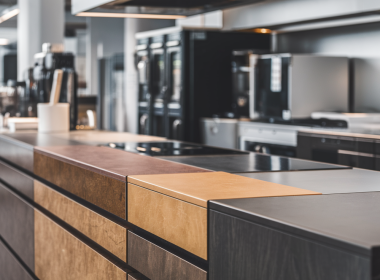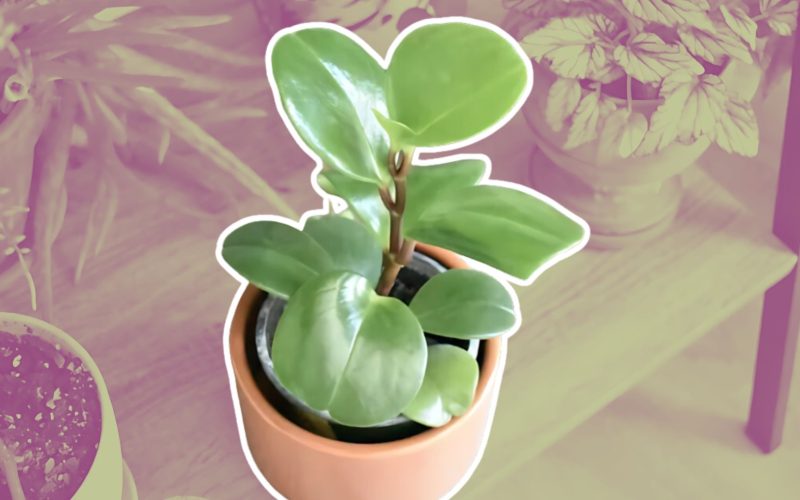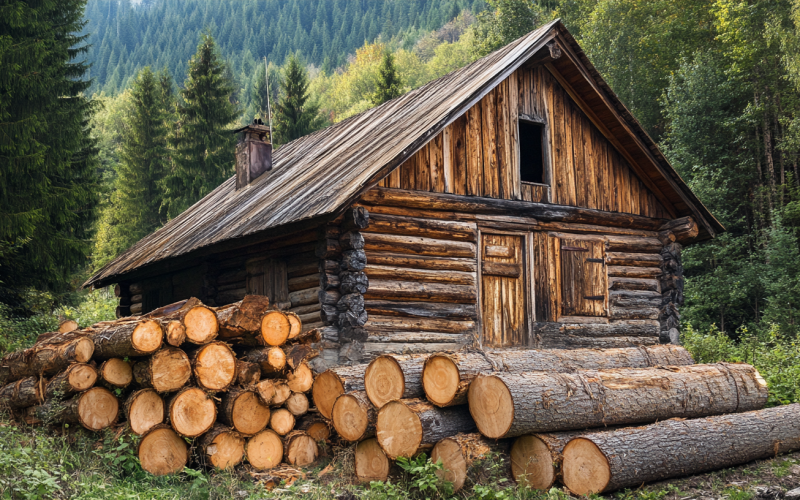Caring for houseplants can be tricky, especially when you’re new. Many people struggle to keep their plants thriving.
Peperomia obtusifolia, or baby rubber plant, is a great choice for beginners and experienced plant owners.
This guide will show you how to care for this low-maintenance plant easily. You’ll learn about its light and water needs, soil preferences, and tips for keeping it healthy.
Overally, it covers everything you need to know to add greenery to your home or expand your plant collection.
By the end, you’ll have all the knowledge to help your Peperomia obtusifolia flourish.
Understanding Peperomia Obtusifolia

Peperomia obtusifolia, also known as the baby rubber plant, is a charming little houseplant. Its thick, dark green leaves resemble small spoons.
These leaves feel waxy and hold water, much like a succulent. Some types have pretty patterns, with white or cream colors mixed in on their leaves.
This plant comes from the lush rainforests of South America. It’s used in warm, humid places but can also be grown in homes.
Don’t worry about it taking over your space—it usually only grows about a foot tall, making it perfect for small areas like desks or shelves.
The baby rubber plant is part of a big family with over 1000 different types. But don’t let that fool you – it’s one of the easiest to care for.
Whether you’re new to plants or have been growing them for years, this little guy is a great choice.
| Common Names | Baby Rubber Plant, Pepper Face Plant |
| Family | Piperaceae |
| Plant Type | Perennial, Herbaceous |
| Bloom Time | Periodic throughout the year |
| Flower Color | White |
Essential Care Tips for Peperomia Obtusifolia

Taking care of your Peperomia obtusifolia doesn’t have to be hard. Here are some key tips to keep your plant happy and healthy.
1. Light Requirements
Peperomia obtusifolia thrives in bright, indirect light. A spot near a window with a sheer curtain works well. It can adapt to lower light conditions, but growth may slow down.
More light is crucial for variegated varieties to maintain their beautiful patterns. However, direct sunlight, especially in the afternoon, can scorch the leaves.
2. Watering Needs
Water your Peperomia obtusifolia every 7 to 14 days, allowing the soil to dry out between waterings. These plants have succulent-like leaves that store water, so they’re more tolerant of underwatering than overwatering.
During winter, reduce watering frequency as the plant’s growth slows down. Always check the soil moisture before watering – if the top inch feels dry, it’s time to water.
3. Soil Preferences
Well-draining soil is essential for Peperomia obtusifolia. An ideal growing medium consists of two parts peat and one part perlite or sand.
This combination provides good aeration and prevents water from pooling around the roots, which can lead to root rot. You can also use a commercial potting mix designed for succulents or cacti.
4. Temperature and Humidity
Peperomia obtusifolia prefers temperatures between 65 and 75°F. It can tolerate slightly cooler or warmer temperatures but avoid extreme fluctuations. These plants enjoy higher humidity levels, mimicking their tropical origins.
To increase humidity, you can mist the leaves regularly or place a pebble tray filled with water near the plant. Just make sure the pot isn’t sitting in water. Keep your plant away from cold drafts and heating or cooling vents to maintain stable conditions.
5. Fertilization
While Peperomia obtusifolia isn’t a heavy feeder, regular fertilization during the growing season can promote healthy growth. Use a balanced, water-soluble fertilizer diluted to half-strength. Apply once or twice a month during spring and summer.
As the plant’s growth slows, you can reduce or stop fertilizing in fall and winter. Remember, it’s better to under-fertilize than over-fertilize, as excess nutrients can damage the plant’s roots and leaves.
Pruning and Maintenance Technique for Peperomia Obtusifolia
Peperomia obtusifolia doesn’t need much pruning, but a little trim now and then can help.
- Snip off any long stems to keep your plant looking neat and full. This also helps new leaves grow, making your plant bushier.
- Look for any dead or yellow leaves. These don’t help your plant and can make it look messy. Gently pull them off or cut them at the base with clean scissors. This lets your plant focus on growing healthy new leaves.
- When you prune, make sure your tools are clean. This stops germs from spreading to your plant. You can wipe scissors with rubbing alcohol before and after use.
- Don’t go overboard with pruning. A light trim every few months is usually enough. Your plant will thank you for staying healthy and looking great.
Proper Propagation Technique
Want more Peperomia obtusifolia plants? Good news – it’s easy to make new ones! Here’s how:
- Take a stem cutting about 4 inches long. Make sure it has a few leaves on top. Cut just below where a leaf meets the stem. This spot is called a node, where new roots will grow.
- If you have rooting hormone, dip the cut end in it. This helps roots grow faster, but don’t worry if you don’t have any – your cutting can still grow without it.
- Plant the cutting in moist soil. Keep only one or two leaves on it, and make sure the node is in the soil. Put the pot in a warm, damp place. A clear plastic bag over the top can help keep moisture in.
- Keep the soil a bit damp but not soaking wet. In a few weeks, you should see new growth. That means your cutting has roots!
Common Problems and Solutions
Even easy-going plants like Peperomia obtusifolia can have issues. Here’s how to spot and fix common problems:
- Yellow Leaves: If you see yellow leaves, you might be watering too much. Let the soil dry out more between waterings, and water your plant only when the top inch of soil feels dry.
- Drooping Leaves: Droopy leaves can mean your plant is getting too much sun or not enough water. Try moving it to a spot with less light. If the soil is dry, give it a good watering. Finding the right balance might take a few tries.
- Browning Tips: Brown leaf tips often mean your plant is cold or in a draft. Move it away from cold windows or air vents. Keep it in a spot where the temperature stays steady and warm.
- Pests: Peperomia obtusifolia usually doesn’t get many bugs, but it can happen. If you see tiny pests, try wiping the leaves with neem oil. You can also use a store-bought plant spray. Be sure to treat your plant weekly until the pests are gone.
Repotting of Peperomia Obtusifolia
Peperomia obtusifolia doesn’t need repotting often. Every few years is usually enough.
How do you know when it’s time? Look for roots peeking out of the drainage holes or pushing the plant out of the pot.
When you do repot, don’t go too big. Pick a pot that’s only a bit larger than the current one. This stops the soil from holding too much water, which can hurt the roots.
Here’s a quick how-to:
- Get a pot about 1-2 inches wider than the old one.
- Use fresh, well-draining soil.
- Gently remove the plant from its old pot.
- Place it in the new pot at the same depth as before.
- Fill in with soil and water lightly.
Conclusion
Caring for Peperomia obtusifolia can be a fun and rewarding experience. Your plant will thrive with the right balance of light, water, and care.
Remember to monitor its needs and adjust your care routine as needed. Don’t worry if you make a few mistakes—this plant is pretty forgiving.
The key is to learn from your plant and enjoy watching it grow. Whether you’re a beginner or an experienced plant owner, the baby rubber plant is a great addition to any home.
It’s easy to care for, safe for pets and adds a touch of green to any space. So go ahead, give Peperomia obtusifolia a try, and watch your green thumb grow!
Frequently Asked Questions
How to Keep Peperomia Bushy?
To keep peperomia bushy, trim long stems regularly, remove any leggy growth, pinch off the tips of stems to encourage branching, provide bright, indirect light to promote fuller growth, and rotate the plant for even growth on all sides.
What Does an Overwatered Peperomia Look Like?
An overwatered peperomia has yellowing leaves that may feel soft and mushy. The stems can become weak and droopy. You might see brown spots on the leaves. The soil stays wet for a long time and may smell musty.
Should You Let Peperomia Dry Out?
Yes, let peperomia dry out between waterings. These plants prefer slightly dry conditions. Wait until the top inch of soil feels dry before watering again. This helps prevent root rot and keeps the plant healthy.











